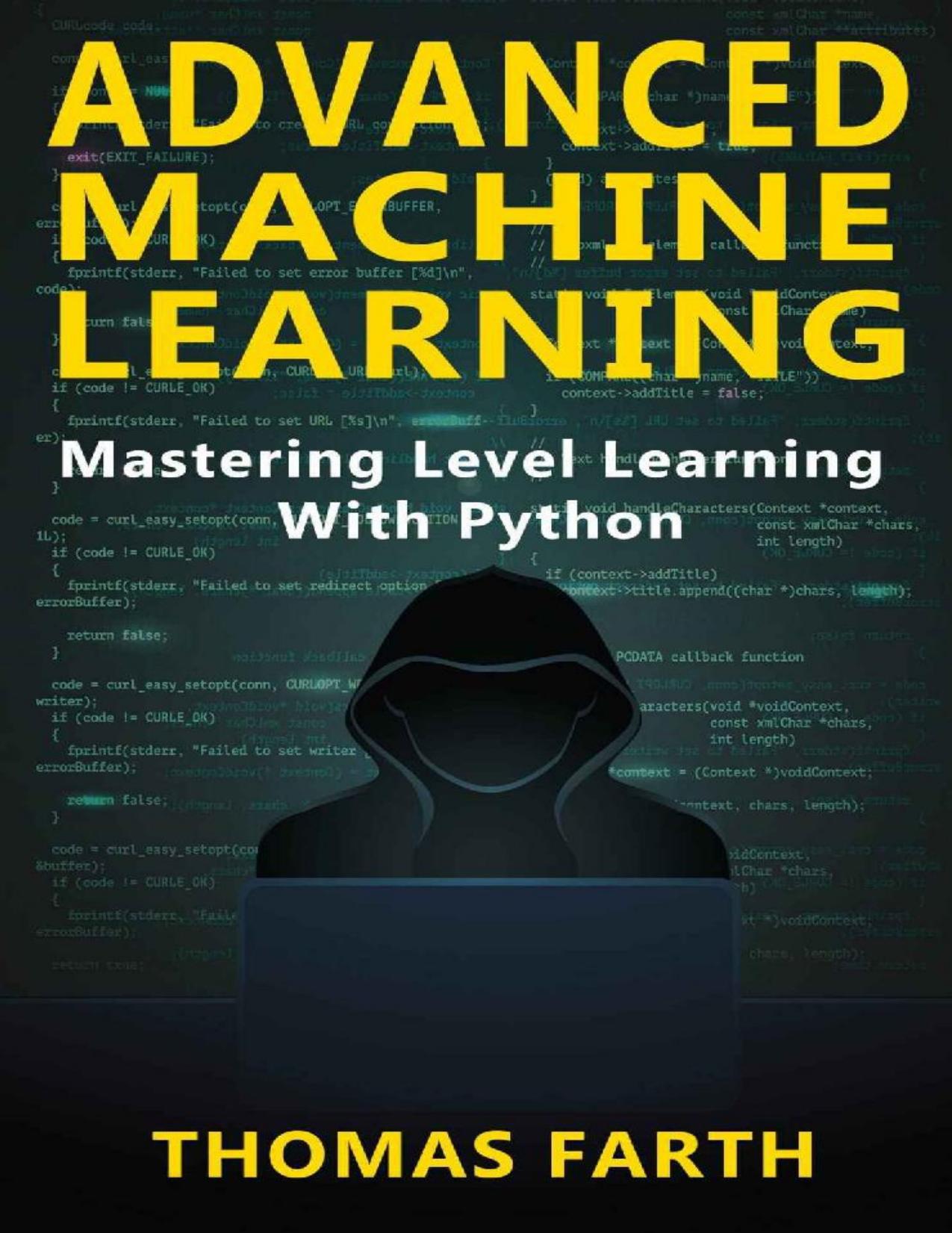Advanced Machine Learning: Mastering Level Learning with Python by Thomas Farth

Author:Thomas Farth [Farth, Thomas]
Language: eng
Format: epub, pdf
Published: 2018-11-19T23:00:00+00:00
4.2 How Deep Learning Works
Computer programs that use deep learning go through much the same process. Each algorithm in the hierarchy applies a nonlinear transformation on its input and uses what it learns to create a statistical model as output. Iterations continue until the output has reached an acceptable level of accuracy. The number of processing layers through which data must pass is what inspired the label deep.
In traditional machine learning, the learning process is supervised and the programmer has to be very, very specific when telling the computer what types of things it should be looking for when deciding if an image contains a dog or does not contain a dog. This is a laborious process called feature extraction and the computer's success rate depends entirely upon the programmer's ability to accurately define a feature set for "dog." The advantage of deep learning is that the program builds the feature set by itself without supervision. Unsupervised learning is not only faster, but it is usually more accurate.
Initially, the computer program might be provided with training data, a set of images for which a human has labeled each image "dog" or "not dog" with meta tags. The program uses the information it receives from the training data to create a feature set for dog and build a predictive model. In this case, the model the computer first creates might predict that anything in an image that has four legs and a tail should be labeled "dog." Of course, the program is not aware of the labels "four legs" or "tail;" it will simply look for patterns of pixels in the digital data. With each iteration, the predictive model the computer creates becomes more complex and more accurate.
Because this process mimics a system of human neurons, deep learning is sometimes referred to as deep neural learning or deep neural networking. Unlike the toddler, who will take weeks or even months to understand the concept of "dog," a computer program that uses deep learning algorithms can be shown a training set and sort through millions of images, accurately identifying which images have dogs in them within a few minutes.
To achieve an acceptable level of accuracy, deep learning programs require access to immense amounts of training data and processing power, neither of which were easily available to programmers until the era of big data and cloud computing. Because deep learning programming is able to create complex statistical models directly from its own iterative output, it is able to create accurate predictive models from large quantities of unlabeled, unstructured data. This is important as the internet of things (IoT) continues to become more pervasive, because most of the data humans and machines create is unstructured and is not labeled.
Use cases today for deep learning include all types of big data analytics applications, especially those focused on natural language processing (NLP), language translation, medical diagnosis, stock market trading signals, network security and image dentification.
Download
Advanced Machine Learning: Mastering Level Learning with Python by Thomas Farth.pdf
This site does not store any files on its server. We only index and link to content provided by other sites. Please contact the content providers to delete copyright contents if any and email us, we'll remove relevant links or contents immediately.
Deep Learning with Python by François Chollet(12875)
A Developer's Guide to Building Resilient Cloud Applications with Azure by Hamida Rebai Trabelsi(10170)
Hello! Python by Anthony Briggs(10123)
The Mikado Method by Ola Ellnestam Daniel Brolund(10013)
OCA Java SE 8 Programmer I Certification Guide by Mala Gupta(9980)
Dependency Injection in .NET by Mark Seemann(9518)
Hit Refresh by Satya Nadella(8993)
Algorithms of the Intelligent Web by Haralambos Marmanis;Dmitry Babenko(8522)
The Kubernetes Operator Framework Book by Michael Dame(8249)
Exploring Deepfakes by Bryan Lyon and Matt Tora(8032)
Practical Computer Architecture with Python and ARM by Alan Clements(7980)
Implementing Enterprise Observability for Success by Manisha Agrawal and Karun Krishnannair(7958)
Robo-Advisor with Python by Aki Ranin(7952)
Sass and Compass in Action by Wynn Netherland Nathan Weizenbaum Chris Eppstein Brandon Mathis(7915)
Grails in Action by Glen Smith Peter Ledbrook(7882)
Test-Driven iOS Development with Swift 4 by Dominik Hauser(7853)
Building Low Latency Applications with C++ by Sourav Ghosh(7841)
Svelte with Test-Driven Development by Daniel Irvine(7840)
The Well-Grounded Java Developer by Benjamin J. Evans Martijn Verburg(7770)
